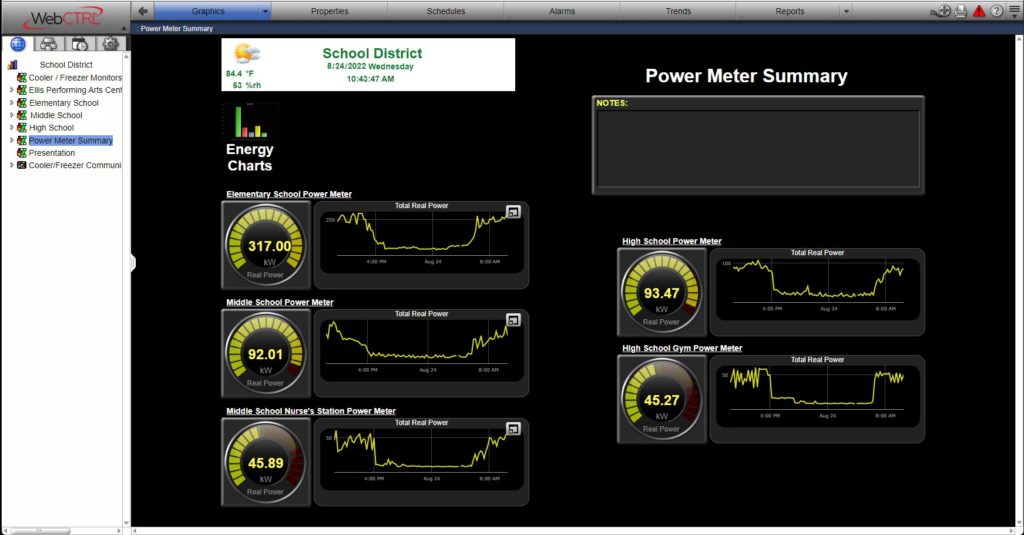
It’s Too Late When You Get the Utility Bills
Growing up you might have heard the phrase, “Close the door! We’re not cooling the outside!” while running in and out of the house on those hot summer days. As a matter of fact, you might have used those exact words to your own kids – and grandkids.
Parents did this because they knew the dreaded electric bill was coming. They couldn’t tell you how much it was going to cost them… but they knew it was going to have an impact on the bill. This was their attempt to get ahead of the curve and soften the blow of high warm-weather electrical costs or increased natural gas costs in the wintertime. They knew once the bill arrived – it was too late! Damage done.
Implications for Commercial Buildings
According to the U.S. Energy Information Office, the average home electrical use in America is 11,000 kWh per year. Compare that to a 200,000-square-foot commercial building which may use over a million kWh per year. That bill is another story entirely. With a 200,000-square-foot structure, it is nearly impossible to know how many doors are left open or lights left on before the $20,000+ monthly bill arrives. By then, it’s too late to avoid the pain of an inflated utility bill.
What if we could get ahead of the monthly commercial bill before it arrives? What if we could see our energy use on a weekly, daily, or even hourly basis? This way we could get a snapshot of when energy was being used and identify when those peak times were happening. This would help analyze, anticipate, and possibly lessen the damage of those higher bills.
Tapping into Technology
Fortunately, there is a way to analyze usage in real time and adjust behavior accordingly. Installing an electrical power monitoring device on the main electrical feed and a submeter on the natural gas line can show live-time energy use. It can measure energy while it is being consumed. Connecting that device to a building automation system can even increase its value. Then your energy use could be recorded for the year, month, day, hour, or even minute. Using trending graphs can help put in perspectives where and when energy is being used now. High spikes during the day can be seen and measured for evaluation.

Using the Data to Your Advantage
With a little investigation, you can easily locate the high usage. Is it the equipment? Armed with this information, you could make sound judgments on when to replace that ancient chiller or install LED lights. Is it the occupants? Maybe do some unoccupied schedule times in the building when no one is present. Why keep a room at 72°F when no one is there?
Power metering/monitoring devices can also check your numbers against those of the utility company. Could it be possible that their meter is reading wrong? The monitoring function can also send out alarms immediately if there is a power loss, voltage problem, or gas interruption. That feature alone could save thousands of dollars on equipment damage or loss.
Whether you are involved in new construction or upgrading existing buildings, utility monitoring devices can be the solution for getting a handle on energy costs. There’s no waiting until the bill comes. Problems can be identified proactively. Because it’s too late when you get the bill.
Tony Holcomb is an Energy Consultant with Harris Integrated Solutions. He is retired Director of Maintenance and Operation for Georgetown County Schools in South Carolina. He served three years as Vice-Chairman for the Association of South Carolina Energy Managers, won South Carolina Energy Manager of the Year in 2016, and won South Carolina Energy Project of the Year in 2013. To Holcomb, his biggest career accomplishment was not having to increase Georgetown County School District’s energy budget over 14 years, helping keep teachers employed and students learning.








